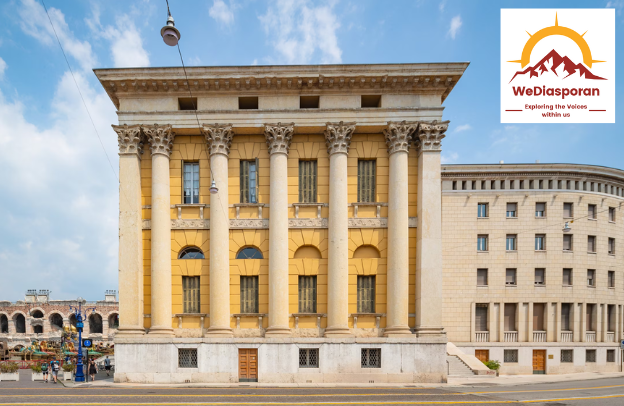As the World Flocks Africa, How Will You Arrive? As a Tourist or as a Returning Kin?

The headlines are beginning to ripple across the world, carried on the currents of data and global reports. You may have seen them yourself. “Africa Leads Global Tourism Growth with 12% Surge.” Numbers and percentages paint a picture of a continent on the rise, of new flight paths and relaxed visas, of Morocco’s bustling medinas and Tanzania’s sweeping plains drawing record crowds.
Learn How to Leverage Your Story through our Story To Asset Framework.
The world, it seems, is finally waking up to the vibrant, undeniable pulse of the mother continent.
But for you, this isn’t a headline. It’s a heartbeat. It’s a feeling you’ve carried for years, a quiet, persistent hum beneath the noise of daily life. It is not the sudden curiosity of a trend-follower, but the timeless, inherited longing of a soul seeking its source. The world may be discovering Africa as a destination, but you are feeling its pull as a point of origin.
See also 17 Simple Travel Safety Tips Everyone Should Know: Your Friendly Guide to Staying Secure on the Road
And so, as the world packs its bags for an adventure, you must ask yourself a question of profound importance, a question that will define not just your itinerary, but the very nature of your journey: When you arrive on that sacred soil, will you be a tourist, or will you be returning kin?
The World’s Awakening: More Than Just a Statistic
Let us first acknowledge the numbers, not as a market trend, but as a sign. A 12% surge in arrivals is more than a statistic; it is evidence of a global shift in perception.
For centuries, the narrative of Africa was written by others, a story often steeped in shadow and misunderstanding. Today, the continent is telling its own story of innovation, art, resilience, and boundless spirit, and the world is finally leaning in to listen.
This growing influx of visitors is creating pathways, both literal and figurative. It means more flights are charting courses across the Atlantic, more doors are opening, and the logistical barriers that once stood between the diaspora and the homeland are beginning to fall away.
But this ease of access presents a critical choice. It makes it simple to arrive with a camera and a checklist, but it does not automatically prepare one to arrive with an open heart and a humble spirit. And the difference between those two approaches is the difference between a vacation and a homecoming.
Defining Your Path: The Tourist vs. The Pilgrim
The distinction is not about budget or travel style; it is about intention. It is a matter of the soul.
The Tourist’s Gaze is horizontal. It skims across the surface of a place. The tourist arrives to see, to do, and to take. They collect sights like souvenirs, a photo in front of a pyramid, a video of a lion on the Serengeti, a trinket from a crowded market.
Their journey is often a performance, a story to be told to others about where they have been. They stand before the Door of No Return at Cape Coast Castle and see a historical artifact, a somber photo opportunity.
They observe a Maasai warrior and see a colourful spectacle. The experience, while perhaps enjoyable, remains external. The tourists leave the same person they were when they arrived, only with a few more photos in their phone and stamps in their passport.
The Pilgrim’s Heart, however, travels vertically. It seeks to go deep, to connect with the soil, the stories, and the spirit of the land. The pilgrim arrives to listen, to learn, and to receive. They understand that they are not a consumer of culture, but a humble guest in a home that was once their ancestors’. Their journey is not a performance, but a private, sacred dialogue between their present and their past.
They stand before that same Door of No Return and feel the ground beneath their feet tremble with the weight of history. It is not an artifact; it is a wound, a sacred threshold they have been called back across to bear witness and to heal.
They sit with a Maasai elder not for a photo, but to listen to the wisdom of a people who live in rhythm with the earth, a rhythm they may feel faintly beating in their own blood. The pilgrim does not leave the same. They leave with a piece of themselves reclaimed, a missing chapter of their own story finally read. They leave more whole.
The Three Pillars of a Pilgrim’s Journey
To choose the pilgrim’s path is to prepare your inner world as much as your outer one. It requires more than booking a flight; it requires a conscious decision to embark on an internal transformation. This preparation rests on three foundational pillars.
Pillar 1: Set Your Intention with Clarity and Courage
Before you even look at a map, look into your heart. Your intention is the compass for your entire journey. A vague desire to “connect with your roots” is a start, but a pilgrim goes deeper. Ask difficult, honest questions.
See also Unlocking Business Success: How IT Drives Efficiency and Growth with Sharon Gordon
What is the specific hunger that is driving you? Are you seeking to heal a generational wound of displacement? Are you trying to find a sense of belonging that has eluded you your entire life? Are you hoping to answer a question your parents or grandparents could not? Perhaps you are coming to reclaim a name, to stand in a place where your lineage was broken and begin to weave it back together.
Write it down. Speak it aloud. Your “why” will be your anchor when the journey becomes emotionally overwhelming, and your guide when you must choose between the path of the tourist and the path of the pilgrim.
Pillar 2: Move with Reverence and Humility
You are stepping onto the cradle of humanity, a continent of ancient kingdoms, profound spiritual traditions, and the sacred ground of your own ancestry. This requires a posture of deep respect. Moving with reverence means understanding that you are a guest, not a customer.
It is the difference between haggling aggressively over a few shillings and paying a fair price to an artisan, honouring their skill and their livelihood. It is learning a few words in a local language—not because you must, but as a sign of respect. It is asking permission before taking a photograph of a person, acknowledging their humanity beyond their aesthetic appeal.
It is approaching historical sites like the slave castles of Ghana or the memorial sites of Rwanda not as attractions, but as hallowed ground—places for quiet contemplation, not casual selfies. Humility opens the door to genuine connection; arrogance will only show you a reflection of yourself.
Pillar 3: Be Open to Being Fundamentally Changed
A vacation is meant to be an escape from your life. A pilgrimage is meant to forever alter it. A true homecoming is not always a comfortable experience. It can be a disorienting mix of profound joy and deep grief.
See also From Pain to Purpose: How Nneka Odoemene’s Journey Is Igniting a Movement for Special Needs Advocacy
You may feel an instant, inexplicable sense of being home in one moment, and feel like a complete outsider at the next. You may find your carefully laid plans disrupted by a chance to encounter that becomes the most important part of your journey. You may be confronted with poverty that breaks your heart or a generosity of spirit that mends it. Do not resist this.
This emotional turbulence is a sign that the journey is working on you. The land is speaking to you, testing you, and remaking you. Be open to being undone by its message, for it is in the process of being taken apart that you can be put back together, stronger and more whole than before.
Your Personal Summons in a Global Trend
So as the world books its safaris and beach holidays, see the headlines for what they truly are in your life: a sign. This global surge is not a crowd you must compete with, but a powerful, collective current pulling the scattered children of the diaspora back to the source.
Think of it this way: the “improved flight connectivity” the news reports speak of is the ancestors clearing a path for your return. The “relaxed visa policies” are the continent opening its arms to welcome you home.
While the world sees a map of destinations, you have the sacred privilege of seeing the face of a family member. While the tourist sees a beautiful coastline, you may see the last shore your ancestors ever knew before being forced into the cold waters of the Atlantic. This journey is not an item on a bucket list.
It is your birthright. It is a chapter in a story that has been waiting centuries for your return, a story that is waiting for you to write the next chapter. And that journey begins not with a ticket, but with a plan.
Your Journey Home Begins with a Single Step
Reading these stories is the beginning. But to truly connect with your heritage, you must walk around the land and breathe the air where your ancestors’ stories were born.
If you are ready to turn your longing into a plan, we have created the perfect tool. The Sankofa Journey Planner is a free, guided workbook designed to help you map out the emotional and practical steps of your own transformative homecoming.
Learn How to Leverage Your Story through our Story To Asset Framework.






